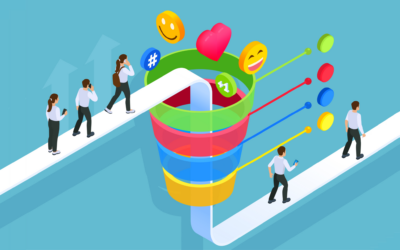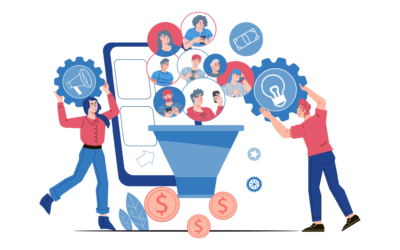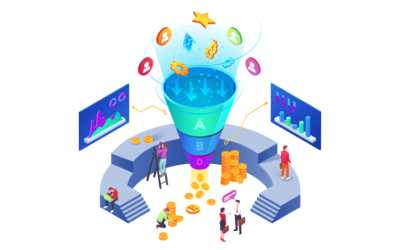Difference between Sales Funnel and Sales Pipeline
Sales pipelines and sales funnels are two of the most crucial instruments for any successful sales company. Sadly, they are also the most easily mistaken. Even experienced sales representatives can confuse a sales pipeline and a sales funnel, or they may not completely comprehend how they relate to one another in the sales process.
So, what happens when you combine these two concepts? First of all, both your staff and your clients may find it confusing. Secondly, it could result in lost chances. You risk missing opportunities to close or nurture prospects if you are unclear about their current stage in the sales funnel. Lastly, it may have an effect on your revenue. You may be losing out on potential income if your sales pipeline and funnel aren’t in line.
It’s crucial to comprehend the distinction between these two phrases and ensure that all members of your team are on the same page if you want to have more influence over how you help your clients make decisions. What are they, then, and which one should you prioritize at what time? To find out, continue reading!
The sales pipeline is the method for generating, qualifying, and nurturing leads. The sales funnel is a visual representation of your potential customers’ decision-making process.
A sales funnel is a graphic representation of the customer journey, beginning with a potential customer becoming aware of a product or service and ending with a purchase. It’s also called a marketing funnel or a purchasing funnel.
Sales Pipeline vs Sales Funnel: Key Differences
What are the primary distinctions between sales pipelines and sales funnels now that we’ve defined each term?
Let’s talk about five areas in which these two concepts are different:
1. Track and Report
Sales Pipeline: You can use data from your CRM and other sales analytics tools to measure the appropriate metrics for your sales pipeline. You and your team can examine and work with pipeline reports that are included in most CRMs.
Sales Funnel: To measure the metrics for a sales funnel, you’ll need a few different tools, but your website analytics and customer information will provide the majority of the data.
2. Advantages
Sales Pipeline: Sales representatives can close more sales by gently guiding leads through the various stages of a pipeline.
Sales Funnel: A funnel makes the sales process easier for the team to understand from the customer’s point of view. It establishes a structure to concentrate on the needs of the client.
3. Stages
Sales Pipeline: A sales pipeline’s phases are based on the actions that salespeople do during the sales process.
Sales Funnel: The phases of a sales funnel are designed to represent the processes that a lead goes through before converting.
4. Who uses what roles?
Sales Pipeline: The sales pipeline is created, used, and analyzed by all members of the sales team. All parties use the pipeline to track and progress deals when using a sales pipeline CRM, which automatically records the actions of your representatives.
Sales Funnel: Sales managers can determine where conversions are occurring (or aren’t) by using the sales funnel. Sales representatives use the funnel to view the sales process from the viewpoint of the client.
5. Where to Create:
Sales Pipeline: Since your data is stored in your CRM, this is the ideal location to build your sales pipeline. If you’d like, you can export the data to a spreadsheet as well.
Sales Funnel: You can export the necessary data to a spreadsheet, but it must be updated on a regular basis to reflect current conditions.
Which Report Do I Need: A Sales Pipeline or a Sales Funnel?
Now that we’ve covered the differences between sales pipelines and funnels, you can see how both can be highly beneficial—depending on your situation.
Let’s talk about when a sales pipeline is necessary versus when a sales funnel is needed.
You need Sales Pipeline in Situations like:
- Your sales representatives don’t know how to turn leads into paying customers: Sometimes they should be pushing sales instead of trials, or perhaps they are bringing in the demo too soon. Sales representatives can see exactly what actions to take and in what order in a pipeline.
- You do not have a clear idea of where current deals stand: You may know what deals are taking place, but what stage are they in? For what duration are they in those stages? You can see this data and proceed with agreements with the help of a pipeline.
- You want to see which actions have the biggest influence on conversion: Which is preferable, a demo or a meeting? Should salespeople send cold emails or make cold calls? This can be seen in an inside sales metrics-driven pipeline that is customized for your company and clients, which can also inform you what is and isn’t working.
- You want to generate more accurate forecasts: To effectively forecast, you must understand how much each lead is worth to you, where each deal stands, and how likely they are to close. This information can be collected and analyzed within your pipeline.
- Your representatives are having a difficult time meeting their quota: Sales representatives can monitor existing deals, their worth, and the areas where they need to prioritize closing deals in order to meet their quota more precisely when they have access to a sales funnel.
You Need Sales Funnel in Situations like:
- It’s difficult for your team to put themselves in their clients’ shoes: Sales representatives can better understand where potential customers are and how to approach them by using a sales funnel, which presents the sales process from the viewpoint of the consumer.
- You want to see how effective your representatives are in qualifying: What percentage of leads pass the qualification stages but don’t convert? This information will be provided by your funnel, which will also show you where you can make improvements.
- You want to see where conversions happen (or don’t): At each stage, how likely is a lead to advance to the next level of the process? Sales professionals can enhance their processes to better meet the demands of their clients by using this conversion rate as a standard and by comparing their results to sales targets.
- You must comprehend which sales tactics work best at each stage of the customer journey: Which actions encourage a lead to convert at each stage of the sales funnel, and which ones cause them to go the opposite way?
In conclusion, you need a sales pipeline if you want to help your representatives in closing deals, meeting their quota, and improving their forecasting. You need a sales funnel report if you want to help your representatives in becoming more customer-focused and if you want to see how leads convert at each point of the buyer journey.
Wrapping It Up:
When you have the choice of both, why pick just one? Using a sales funnel and a sales pipeline together is what we advise for long-term sales management.
Together, they provide insightful information about how to improve your sales methods for increased close rates and conversions. The sales team can decide whether your sales process requires more or fewer stages by using both sales visualizations, and they can then adjust sales performance accordingly.
Sales professionals can modify the sales process to include numerous stages such as product demonstrations, proposal assessment, decision-maker identification, and more sales meetings with leads.





